Introduction: Beehiiv vs Substack in 2025 - what changed and why it matters
The newsletter landscape has matured fast. In 2025, Beehiiv doubled down on growth and monetization (ad network upgrades, referral/Boosts improvements, deeper automation and analytics), while Substack expanded its community layer (Notes, Chat, app-based discovery) to help writers get found and interact with readers. This guide cuts through the noise so you can choose the best newsletter tool for where you’re headed.
"Substack reports 35+ million active subscriptions and over 3 million paid subscriptions." - Source
What this guide covers: pricing and fees, monetization options, growth and discovery, editor UX, customization, automation, analytics, SEO, integrations, and data ownership.
One‑sentence verdict: Choose Beehiiv if you plan to monetize or need growth/automation; choose Substack if you want the simplest writer-centric setup with built‑in audience discovery.
Note for SaaS and content teams: If you need a blog + help center + newsletter + AI SEO automation in one stack, consider BlogBowl as an integrated alternative (we’ll explain when that makes sense). Learn more at https://www.blogbowl.io
Comparison at a glance
Feature | Beehiiv | Substack |
|---|---|---|
Ideal for | Growth-focused creators, media operators, and teams that want to monetize | Writers who want the simplest setup with built‑in discovery |
Pricing model | Tiered SaaS plans (free up to a limit, then paid tiers) | Free to publish; revenue share on paid subs |
Platform fee on paid subs | 0% platform fee (payment processor fees apply) | 10% platform fee (plus payment processor fees) |
Monetization types | Paid subs, native ad network, Boosts, referrals, direct sponsorships | Paid subs only (sponsorships handled manually) |
Growth engine | Built‑in referral program, Boosts marketplace, recommendations | Network discovery via app, Notes, recommendations, social-style features |
Editor/ease of use | Simple editor with modern growth tools; moderate learning curve | Ultra-simple, writer-first editor; minimal setup |
Design/branding control | Website builder, templates, custom domains, more branding controls | Minimal templates, limited customization; uniform look |
Automation | Visual workflows, sequences, triggers, segmentation | Very limited automation (primarily one-off sends) |
Analytics depth | Advanced analytics, source attribution, segment reporting, A/B tests | Basics (opens/clicks), limited segmentation and source detail |
SEO control | Custom domains, meta data, public archive optimized for search | Limited SEO controls; discovery relies more on Substack network/app |
Integrations/API | Open ecosystem, API/webhooks, Zapier, analytics and commerce integrations | Closed ecosystem with limited integrations and no public API |
Data ownership/portability | Easy subscriber/content export; integrations to sync data | Subscriber export supported; limited portability/integrations |
Methodology
Independent feature testing against common creator workflows: launch, first send, paid tier setup, referral/Boosts configuration, sample automations, analytics review, and migration steps.
Focused on 2025 updates and real-world use: Beehiiv’s ad network and referral upgrades; Substack’s Notes, chat, and in-app discovery improvements.
Watch: Beehiiv vs Substack overview
Quick decision framework
Choose Beehiiv if: you plan paid subscriptions, want ad/sponsor revenue, need referral/boost growth, require segmentation and automations, want API/integrations, or care about SEO control and branding.
Choose Substack if: you want the simplest writer-first tool, value built‑in discovery and community (app, Notes, comments), don’t need advanced automations/segmentation, and prefer zero monthly cost for free newsletters.
Edge cases:
Starting from zero audience but plan to monetize in 3–6 months.
Team vs solo: multi-publication needs, collaboration, roles.
Migration concerns and timeline.
When to consider BlogBowl instead:
You need a blog + changelog + help center + integrated newsletter with AI-driven SEO content, internal linking, analytics, and multi‑property management.
You want to own the whole content stack and attract organic traffic (Google + AI search) by default.
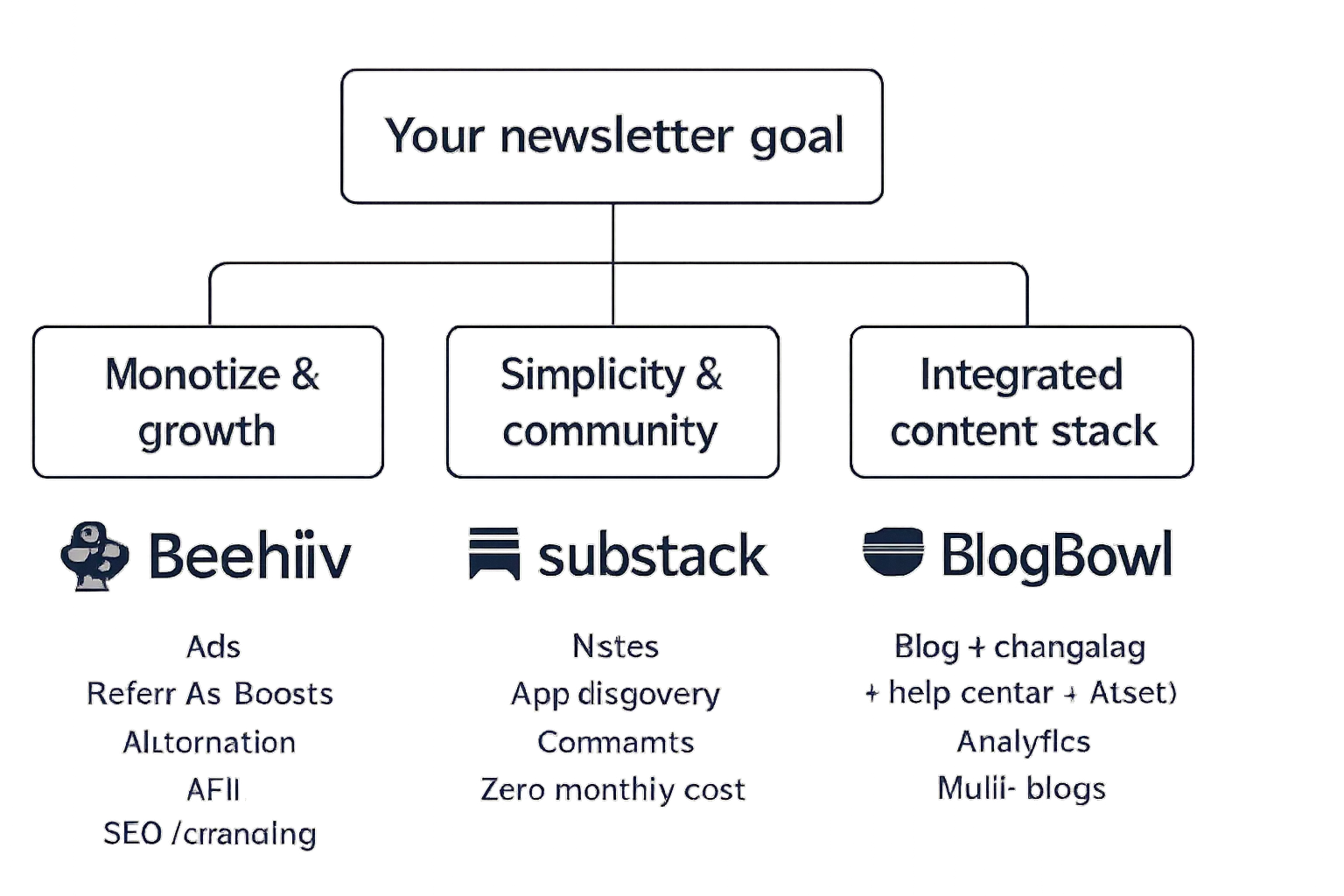
Pricing & fees
Substack: free to run; 10% platform fee on paid subscriptions + payment processing; strong for free newsletters or early-stage paid experiments.
Beehiiv: free up to 2,500 subs, then tiered monthly pricing; 0% platform fee on paid subscriptions (Stripe fees still apply).
"Beehiiv’s free Launch plan supports up to 2,500 subscribers, and its monetization tools charge 0% platform fee on paid subscriptions." - Source
Monetization types
Substack: Paid subs (monthly/annual); built-in discovery/community to aid conversion; manual sponsorships.
Beehiiv: Paid subs (0% platform fee), native ad network, referral program, Boosts (cross‑promo), and flexible pay‑what‑you‑want/lifetime options.
Break‑even and example scenarios
Formula: Substack cost ≈ 10% of paid revenue (ex‑processing). Beehiiv cost ≈ flat monthly plan.
Scenarios: $500, $1,000, $5,000, $10,000 MRR - annualized below.
When Substack wins: no paid subs or very low paid revenue (and you value zero monthly cost).
When Beehiiv wins: as paid revenue grows or you add ads/sponsorships where 0% platform fee compounds.
Pricing/ROI matrix (illustrative)
Monthly Paid Revenue (MRR) | Substack Platform Fee (Annual, 10%) | Beehiiv Flat Plan (Annual, example) | Net Take‑Home Difference (Annual) |
|---|---|---|---|
$500 | $600 | $588 | $12 |
$1,000 | $1,200 | $588 | $612 |
$5,000 | $6,000 | $588 | $5,412 |
$10,000 | $12,000 | $588 | $11,412 |
Note: Illustrative math assumes Beehiiv ≈ $49/mo ($588/yr). Excludes Stripe/payment processing for both platforms. Your plan tier may vary by list size/features.
Takeaways
If you expect to cross roughly $400–$600/month in paid subs, Beehiiv’s flat plan typically beats Substack’s 10% fee over the long term.
If your newsletter will remain free, Substack’s zero monthly cost is compelling.
Growth models compared
Substack: built‑in discovery through the Substack app (recommendations, Notes, follows), plus comments and chats. It’s great for writers who benefit from network effects and want instant exposure inside a lively creator‑reader ecosystem.
Beehiiv: growth levers you own - referral program, Boosts marketplace (paid cross‑promos), native ad network, and magic links. Best for building durable, owned audience engines and running collaborative swaps on your terms.
Which growth engine fits your channel mix?
If you can seed via social, YouTube, podcast, or SEO, Beehiiv’s referral and Boost tools scale well. You control traffic sources, track acquisition, and convert across multiple monetization paths.
If you’re starting with no audience and want in‑platform discovery from day one, Substack is attractive. Its network effects can accelerate early subscriber velocity before you spin up external channels.
Practical tips
Pair Beehiiv with an audience‑building plan: lead magnets, partner swaps, programmatic content, and rigorous UTM tracking. Use referrals to turn new subscribers into distribution.
On Substack, lean into recommendations, cross‑posts, Notes, and app engagement. Comment on adjacent publications and invite discussions to amplify in‑network reach.
Editor and onboarding
Substack: distraction‑free editor; the fastest path from sign‑up to send with minimal settings and almost no friction. Expect limited templates and a uniform look across publications.
Beehiiv: a clean editor with blocks, optional templates on higher tiers, and built‑in polls/CTAs. Setup is slightly longer due to added controls for domains, branding, and growth tools.
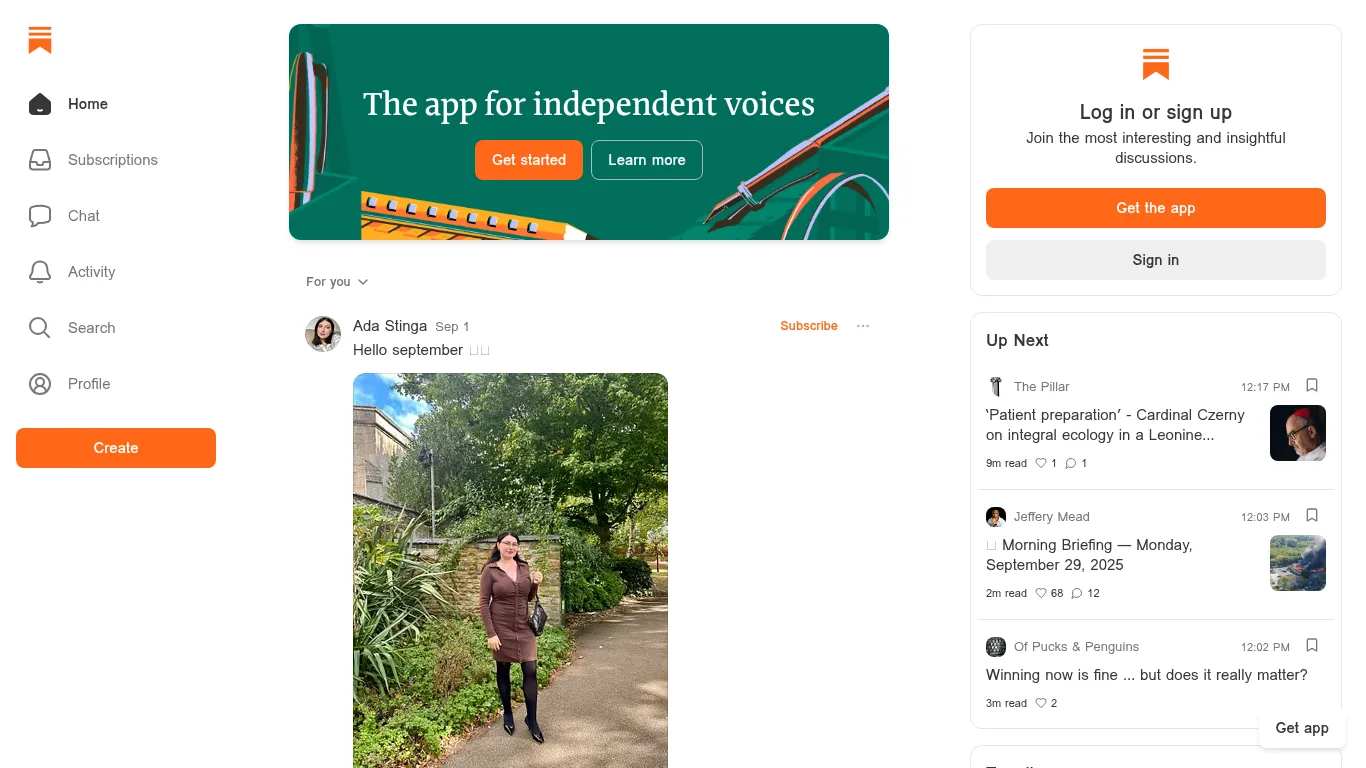
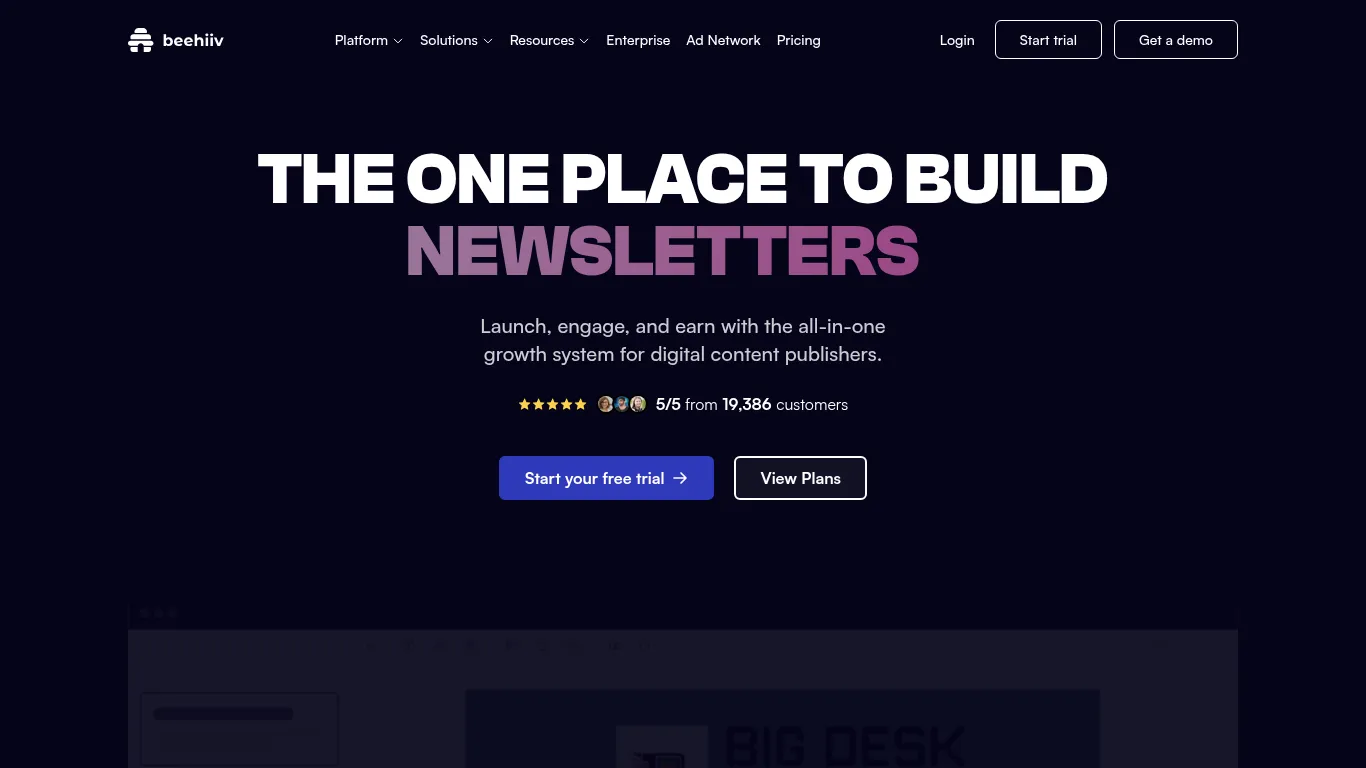
Team workflows
Roles, co‑authors, and collaboration needs: Beehiiv supports multi‑newsletter management and team permissions on higher tiers; Substack supports basic collaboration but is simpler for solo writers.
Draft reviews, approvals, and multi‑newsletter management: Beehiiv’s structure favors teams running multiple publications with review flows; Substack is optimized for fast solo publishing with lightweight collaboration.
Accessibility and learning curve
First hour (new writer): Substack wins for simplicity - sign up, write, publish. Minimal settings reduce friction and cognitive load.
First week (marketer/operator): Beehiiv wins for control - configure domain, branding, referral/Boosts, segments, and basic automations. Slightly steeper learning curve, but more levers to grow.
Branding control
Domains: Set custom domains and authenticated sender domains to reinforce trust and deliverability; higher tiers typically remove platform branding for a fully white‑labeled feel.
Templates and style systems: Configure typography, color tokens, and reusable blocks; save templates per series or section to keep recurring formats consistent while speeding production.
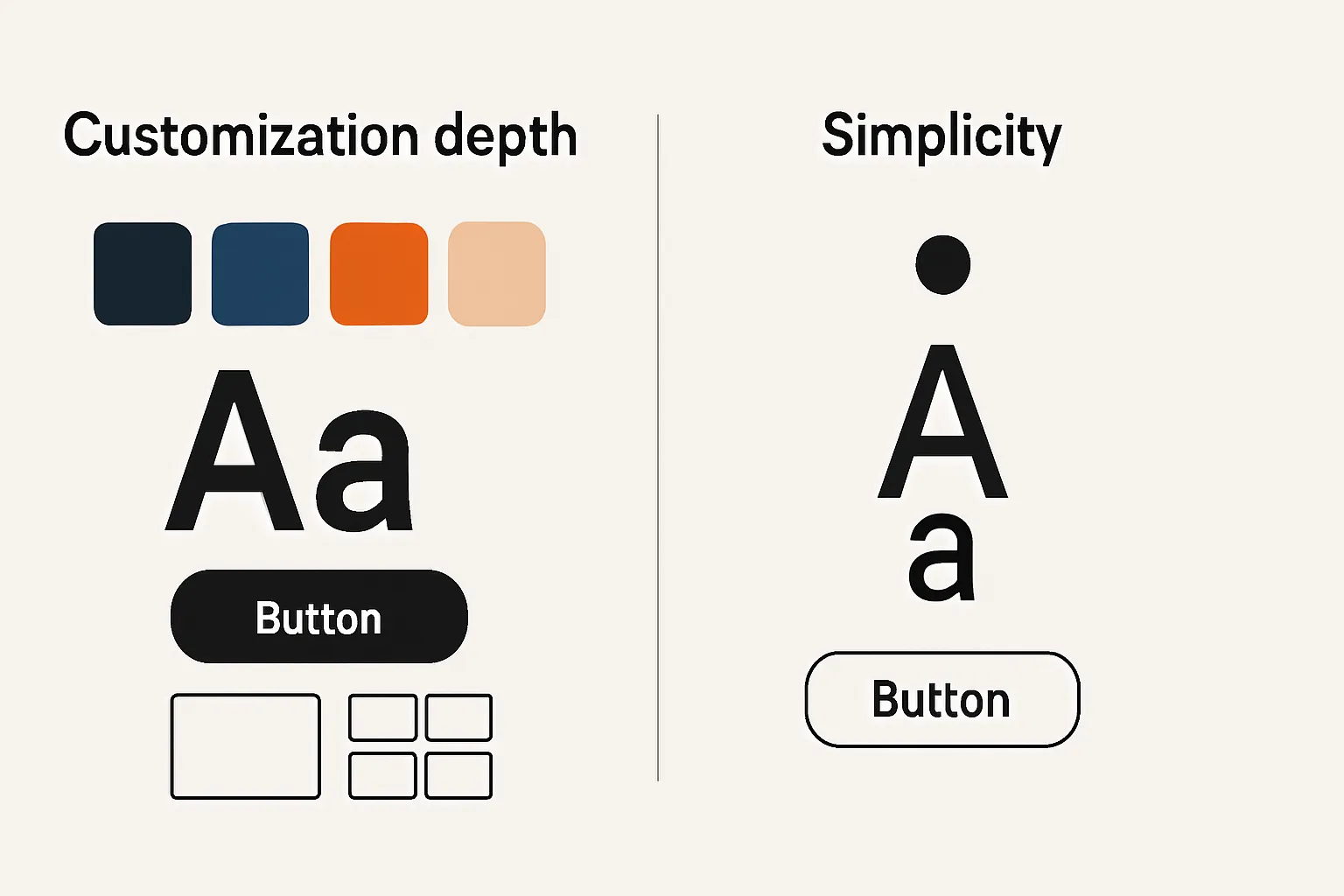
On‑site experiences
Homepage/publishing hub: Curate a branded hub with clear navigation, featured posts, and category modules. Optimize paywall and welcome pages to increase trial/paid conversion. Use signup forms, pop‑ups, and embeds to capture intent across your site.
Consistency: Maintain a consistent brand across emails and the public web archive; align fonts/colors and content modules. If you run multiple publications, standardize components to streamline maintenance at scale.
Reader experience
Text‑first vs rich layouts: Simplicity wins for narrative, long‑form essays, and fast publishing. Modular, richer layouts are worth it for visual roundups, product features, and sponsor placements where design increases clarity and monetization.
Automation and Campaigns
Automation depth
Beehiiv: Visual workflows and multi‑email sequences let you build welcome, onboarding, nurture, re‑engagement, and product‑launch flows with ease. Triggers can fire on form submit, segment membership (e.g., “clicked 3+ issues”), or behavior (specific link clicks, last opened date). Add delays, conditional branches, goal tracking, and segment updates to personalize journeys at scale.
Substack: A basic welcome message and manual broadcasts keep things simple. You’ll rely more on your publishing cadence than on automated flows. Good for writers who prefer a steady schedule over segmented automation.
Practical setups that drive revenue
Free‑to‑paid conversion sequence
Day 0: Welcome + value promise, point to “start here” posts.
Day 2–5: Best‑of sampler + “what paid unlocks” preview.
Day 7: Social proof + limited‑time incentive (annual discount or bonus content).
Day 14: Case study/results + direct upgrade CTA.
Referral/reward automations
Trigger when a subscriber hits a share threshold; auto‑deliver perks (exclusive post, downloadable, or shout‑out). Nudge non‑referrers with milestone teasers.
Sponsor onboarding
Capture sponsor interest → auto‑send media kit → collect assets and tracking links → schedule creative review → post‑flight performance email.
Engagement segmentation
Active (opened/clicked last 30 days): send deeper content and upsell paid tiers.
At‑risk (no opens 30–60 days): send value recap + topic preferences survey.
Dormant (60–90 days): win‑back series; then suppress to protect sender reputation.
Deliverability fundamentals
Authentication: Set up SPF, DKIM, and DMARC on your sender domain; align envelope, header‑from, and return‑path domains.
List hygiene: Use confirmed opt‑in where possible; scrub hard bounces and chronic non‑engagers; throttle warm‑up when moving to a new domain.
Avoid clipping: Keep HTML payload small (aim under ~100KB for Gmail); compress images; prefer lean layouts for long issues.
Template choice: Plain‑text‑leaning emails often earn higher inbox placement and clicks for editorial content; use richer modules sparingly for promos or product roundups.
Send discipline: Test time windows, subject line length, and from‑name consistency; monitor blocklist signals and feedback loops to catch issues early.
Analytics depth
Beehiiv: Acquisition source tracking, UTM breakdowns, per‑segment performance, A/B tests, and per‑channel open/click trends help you see which growth levers truly compound.
Substack: Core metrics like opens, clicks, and engagement rate are easy to access, but acquisition/source analytics are less granular for channel-by-channel optimization.
Data ownership and portability
Export options: Export subscribers, posts/archives, and paid member lists. Keep regular backups in case you need to roll back or validate a migration.
Migration timeline and gotchas: Payment tokens for paid subs often require a coordinated handoff; communicate changes to subscribers to preserve consent. Plan DNS and sender-domain moves to avoid deliverability dips; warm new domains gradually and align SPF/DKIM/DMARC.
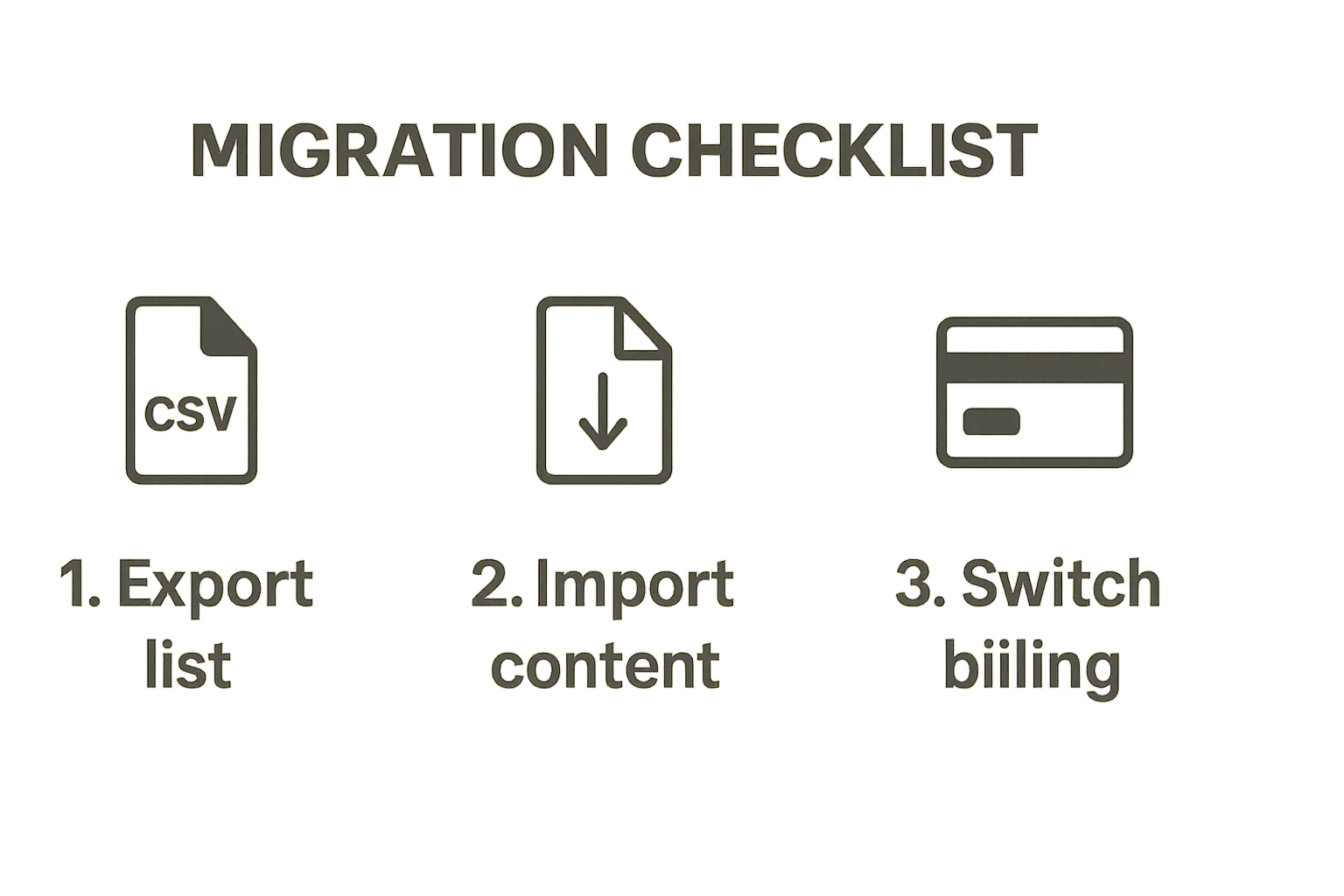
What to monitor monthly
CAC-to-LTV for paid subs by acquisition source
Activation rates: first open/click within 7 days
Free-to-paid conversion by traffic source and segment
Churn cohorts (monthly/annual), win-back performance
Sponsor CTR benchmarks and effective RPM for ad/sponsor slots
SEO and web presence
Beehiiv: Ideal for a “blogletter” strategy. You can set custom slugs and edit meta titles/descriptions for each post, and the public archive behaves like a lightweight blog. That means your newsletter back catalog can rank in Google and surface in AI search with far more control over how each page appears. Pair this with a custom domain for stronger brand signals, better click‑throughs, and long‑term compounding organic traffic.
Substack: Uses opinionated URLs and metadata. You benefit from substack.com’s overall domain authority and in‑app discovery, but you have less control over page‑level SEO. For creators who rely mainly on the Substack app ecosystem (Notes, follows, recommendations), this is “good enough,” but it’s not the most flexible setup for those building search‑led moats.
Integrations and API
Beehiiv: Offers an API, webhooks, and a growing catalog of integrations (including Zapier and analytics/commerce tools). That openness makes it easier to stitch into an existing stack - sync subscribers to your CRM, pass UTM/source data to a warehouse, trigger automations from form submits or segment changes, and reconcile sponsor performance across platforms.
Substack: A closed ecosystem with limited external integrations. The upside is simplicity and fewer moving parts; the trade‑off is reduced extensibility if you need data flows, custom growth funnels, or programmatic reporting.
When an integrated CMS + newsletter is better
If your roadmap looks like “publish blog + changelog + help center + newsletter” and you want AI‑assisted SEO at scale (daily content, internal linking, keywords, embedded media) with centralized analytics and multi‑property management, an integrated platform such as BlogBowl can reduce tool sprawl and operational overhead. You’ll own the entire content stack - site, docs, and email - from one place, designed to win on both Google and AI search out of the box. Learn more at https://www.blogbowl.io
The bottom line
Pick Beehiiv if you plan to monetize (paid subs, ads, sponsors), need segmentation/automation, want API/integrations, and care about SEO/branding control. It’s better for treating your publication like a scalable business with owned growth loops and detailed analytics.
Pick Substack if you want the fastest, simplest writer‑first workflow with built‑in community and discovery, and you’ll stay free or lightly monetized. It’s ideal when you value minimal setup and in‑app network effects over customization.
Migration notes
Typical move takes under an afternoon:
Export subscribers (CSV) and paid members
Import posts/archives and set redirects where needed
Connect Stripe and verify payout settings
Update custom domain and sender authentication (SPF/DKIM/DMARC)
Warm up sending and monitor deliverability for 1–2 weeks
Alternatives to consider
BlogBowl: for SaaS/startups that want an all‑in‑one blog + help center + newsletter with AI‑generated, SEO‑optimized content, automatic internal linking, and built‑in analytics to grow organic traffic on autopilot - while keeping your content, data, and domains fully owned. Learn more at https://www.blogbowl.io
Next steps
Start free on both platforms and test your workflow for a week.
Run a paid tier pilot with 20–50 founding members to validate pricing and value.
Track acquisition by source, conversion to paid, and net revenue after fees.
Compare analytics and operating effort after month one - then commit to the platform that aligns with your growth plan.


